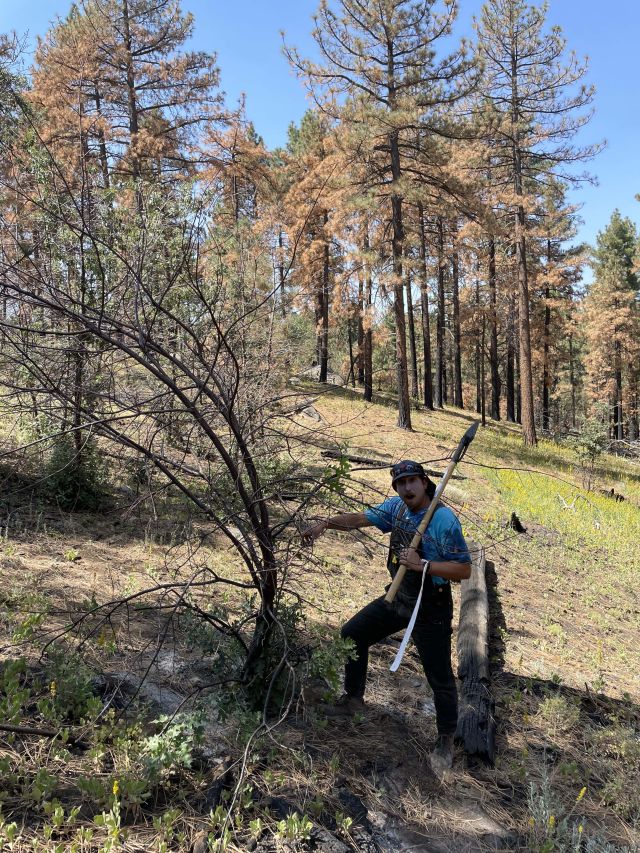
The effects of the seasonality of prescribed fire on black oak (Quercus kelloggii) survivorship and ecophysiology
Forest Service land managers in the Cleveland National Forest are interested in extending their burn window to allow for a longer prescribed fire season. Currently their window is restricted to months that black oaks are dormant (do not have leaves). This restriction was set in place because of the unknown effects of burning black oaks once they start to push out new leaves. To help inform effective management, we set up an experiment that combined forest demographic and physiological measurements on black oaks. To get at the demographic aspects we followed a Forest Service common stand exam (CSE) protocol, that includes detailed tree and plant community measurements, as well as, fuel measurements that help predict intensity and effectiveness of the burn. We took several physiological measurements to understand the underlying mechanism driving oak response to fire. This included xylem pressure potentials to getting at water stress in oaks. We also took non-structural carbohydrate (NSC) measurements from the roots of the oaks. NSCs can help us understand how the oaks allocate their stored carbon when exposed to fire at different times of the year.
